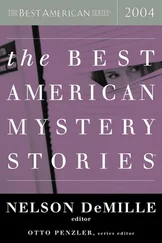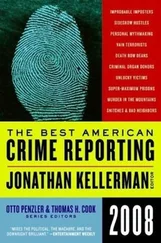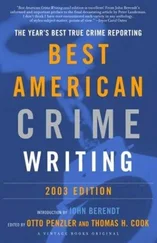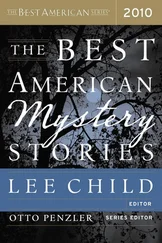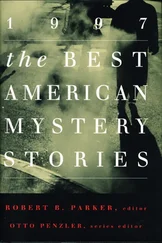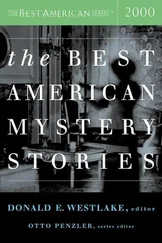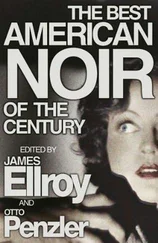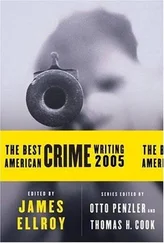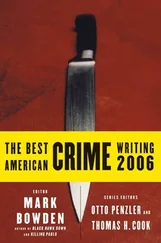No one in loss prevention can say precisely when shoplifters began to organize themselves into professionalized gangs, but there is general agreement that one of the first people to isolate the problem was a man named King Rogers. Rogers retired in 2001 as the head of Target Corporation’s asset-protection program and now runs his own consulting firm, the King Rogers Group, in Minneapolis. A short, voluble man, sixty-three years old, he is as close as anyone can come to being the star of an industry that is virtually defined by its secrecy. Rogers is a fixture at every loss-prevention conference, and is, in the words of Nate Garvis, the vice-president of government affairs at Target, “one of the giants on whose shoulders we stand.” Rogers worked for a short time at the National Security Agency before taking a job, in the late nineteen-sixties, as the head of asset protection at Strawbridge & Clothier, a regional department store in Philadelphia.
In those days, store security was a decidedly less high-tech venture: no cameras, no live video monitoring. Agents were obliged to improvise, hiding among racks of clothes or in empty boxes to conduct surveillance. “I can recall lying in the return-air plenum of a ceiling-the space between the drop ceiling and the main ceiling-having poked a hole in the acoustic tile so I could look through,” Rogers told me. “In those days, you often didn’t have radios, so you had to signal to your compatriot somewhere on the selling floor that the person you were watching just concealed something. You dropped something gently out of that ceiling-usually a small piece of paper-and let it waft to the ground. That was the signal to go pick them up.” When security personnel did spot a thief, they commonly took what Rogers calls a “cops-and-robbers” approach-pursuing the suspect into the street and trying to tackle or otherwise detain him. “I remember working at the downtown Philadelphia store at Eighth and Market, chasing some shoplifter out of the store,” Rogers said. “He was running down the street with an armload of clothing and I’m yelling ‘Stop!’ and thinking, Do I really want to catch this guy? By then, we had those big clunky two-way radios, and I do recall seeing one or two of those being used like a football. They’d bring a fleeing thief to his knees quick.”
Sometimes thieves escaping on foot would run into oncoming traffic (or into an innocent bystander). Retailers were responsible for any injuries incurred, and such incidents soon compelled them to take a more proactive approach. In the late seventies and early eighties, many stores began to install closed-circuit cameras and electronic-article-surveillance technology-known as E.A.S. E.A.S. tags, which can be sewn into garments or slipped between the pages of books, contain a small magnetic coil that triggers an alarm at store exits. The technology is still in wide use despite its questionable effectiveness. The problem is not only that false alarms are so frequent (who hasn’t set off an alarm at a store exit and been waved through by a weary security guard?), or that thieves have learned to defeat the system with foil-lined booster bags, but that the alarm sounds only after a thief has passed through the security gates. “If they’ve got a load of goods that they intend to convert to money, they’re going to keep going,” Rogers says-and, because retailers have forbidden loss-prevention agents to give chase, the merchandise is lost.
In 1980, one of Rogers’s detectives at a suburban branch of Strawbridge & Clothier noticed a team of four people stealing men’s shirts off racks. Two people acted as lookouts while the other two stuffed clothing, hangers and all, into large black plastic garbage bags. The thieves fled the store before they could be detained, but the detective got their license-plate number and phoned the police. The cops apprehended the thieves, booked them for shoplifting, and soon released them on misdemeanor charges-typical in shoplifting cases. But the volume of the thefts, and the shoplifters’ brazenness, made Rogers suspect that something more was going on. The following week, a team of thieves using the same method was observed at a different branch, so Rogers enlisted the help of a colleague at the police department and traced the thieves to a tenement in Providence, Rhode Island. The shoplifters, Rogers told me, turned out to be members of a South American gang who were stealing designer clothing from department stores and specialty stores from Boston to Atlanta. “Ultimately, the police had enough evidence to charge them with some elevated theft-larceny charge, beyond shoplifting,” Rogers says. “That caused them to pretty much dissipate.”
IN 1984, WHEN ROGERS JOINED TARGET (then part of the Dayton Hudson Corporation) as the vice-president of loss prevention, it was not widely recognized that big-box stores were also victims of organized retail crime. “And it was not obvious to me right away,” Rogers says. “In department stores, the gangs were hitting brand-name and in some cases designer clothes and accessories, but at Target it was the very popular branded-label goods: over-the-counter analgesics, film, batteries, baby formula, smoking-cessation products, condoms, teeth-whitening strips”-any small, easy-to-resell merchandise. “I couldn’t understand how there was an aftermarket for those items,” Rogers says. “But there obviously was.” Stores like Target, Wal-Mart, and Kmart were favorite stops for retail-theft gangs, who travelled from store to store and state to state, wiping out entire shelves’ worth of products. Razor blades remain so difficult for retailers to keep in stock that stores like Duane Reade display them behind the cash registers; CVS has installed elaborate push-dispensing mechanisms that release only one pack at a time. (Most large retailers today also keep baby formula and teeth-whitening products under lock and key, along with Wii game software and MP3 players.)
By the mid-nineteen-nineties, Target was the fifth-largest retailer in the country, with around twenty-one billion dollars a year in sales. (Today, Target has annual sales of sixty-three billion dollars.) Target won’t release exact figures, but the average shrink rate for retailers is between one and two per cent of sales, which would conservatively put Target’s losses in 1995 at around two hundred and ten million dollars. To combat this loss, King Rogers established a national investigations team to focus on organized retail crime. “We had a dozen agents around the country,” Rogers says. “They had two roles. One was investigating these professional thieves and professional fraudsters who, also in teams, pass bad checks and use stolen credit cards. The second role was to train asset-protection people how to respond when they identified a possible organized retail gang at work.” Rather than detain boosters, agents were told to allow them to think that they had got away undetected, and then tail their vehicles.
In this way, Rogers and his investigation team learned that the stolen goods were entering a highly organized distribution chain that often began with the hundreds of flea markets that had sprung up among the suburban sprawl of cities across the country. Crooked flea-market venders would buy stolen goods from boosters, then put a few samples out on their tables-“as a marketing ploy,” Rogers says. “Because the next-level-up buyer, a ‘middle buyer’-often ex-cons who had discovered this great opportunity-made a habit of going to flea markets looking for product. When he saw Tylenol on a vender’s tabletop, he’d say, ‘Can you get me more Tylenol in fifty-count gelcaps?’” The vender, if he did not have the item in stock, would tell his boosters what to go and steal. “We’d catch boosters with lists of stuff to steal all the time,” Rogers says. Typically, the middle buyers would sell the products to a “cleaning house”-in most cases, a three-to-five-thousand-square-foot warehouse staffed with undocumented workers whose job was to remove price stickers, E.A.S. tags, and identifying store labels. Often, products such as baby formula would sit in cleaning houses beyond their expiration date, in which case workers changed the dates stamped on the products. (In 2001, authorities in Texas arrested an organized retail-crime gang that had reportedly stored a million dollars’ worth of stolen baby formula in rodent-infested garages at an improper temperature.) The cleaned products were shrink-wrapped and put in master cartons to look as if they had been bought from the manufacturer, then sold to corrupt wholesalers who would commingle the stolen goods with legitimately purchased products and sell them back to retailers-often to the same store from which they had been stolen.
Читать дальше

